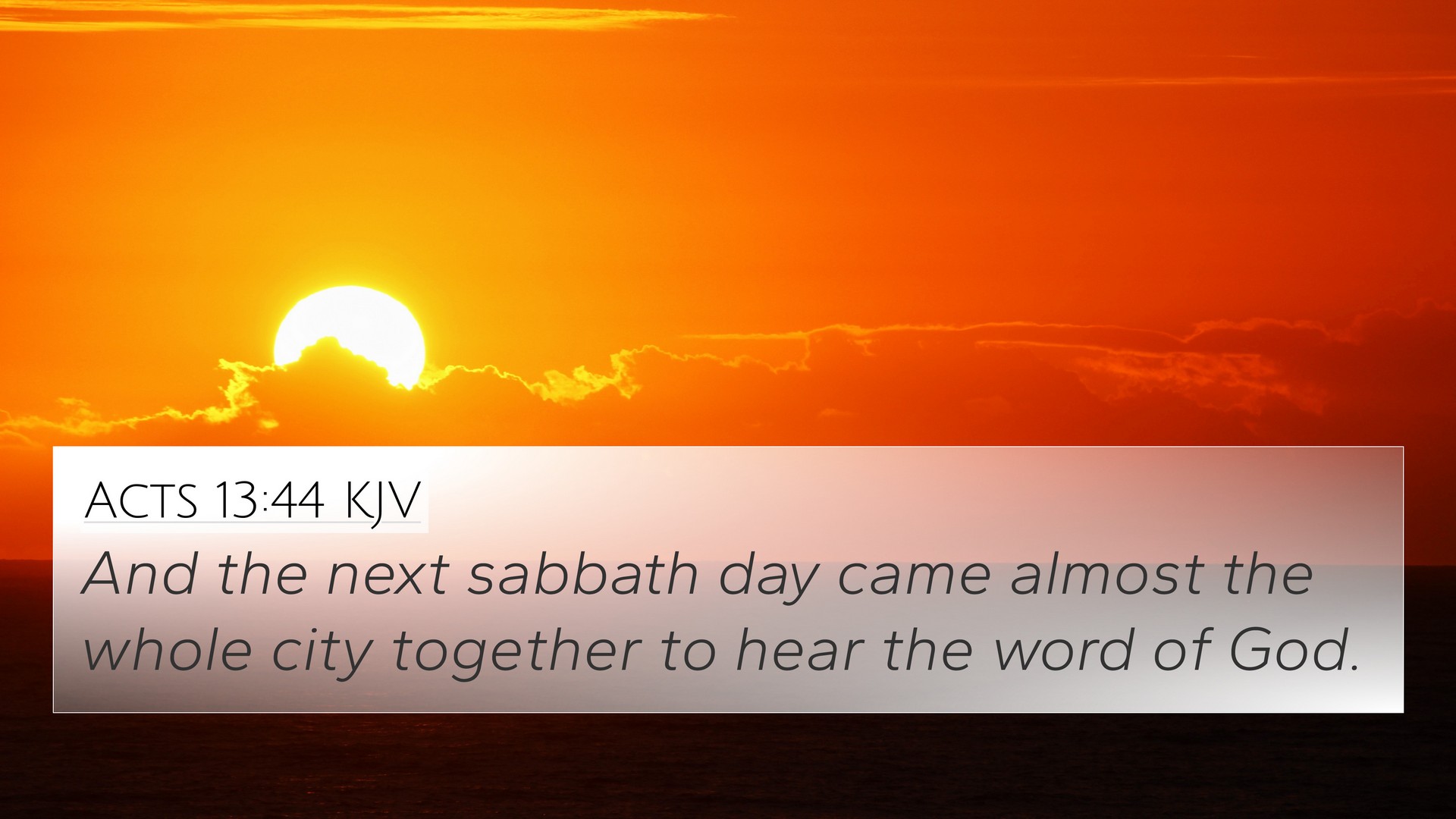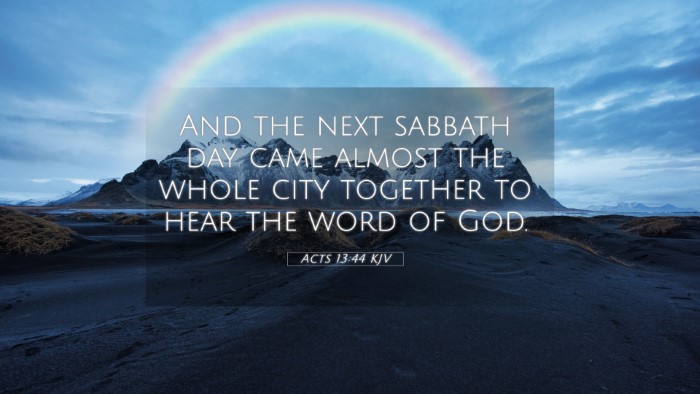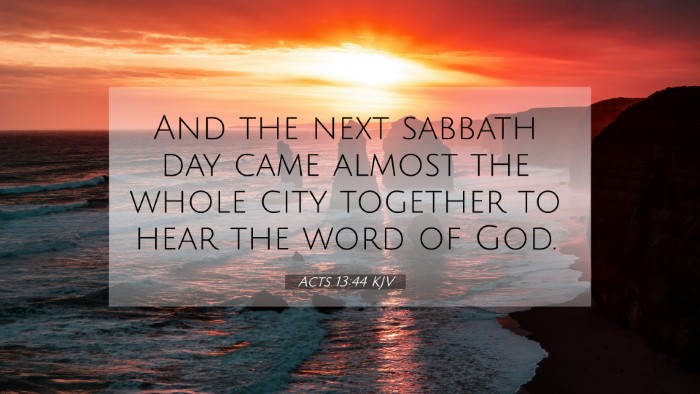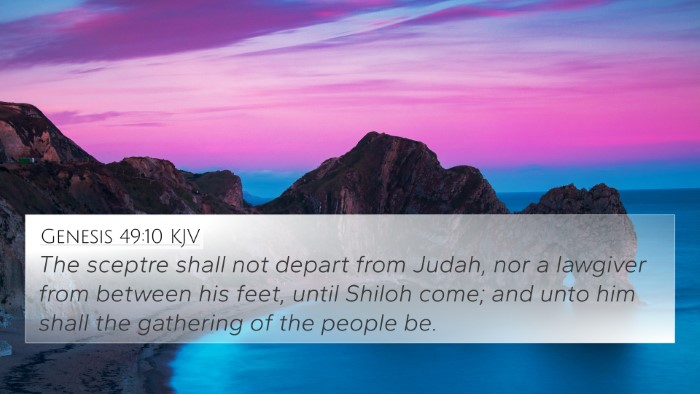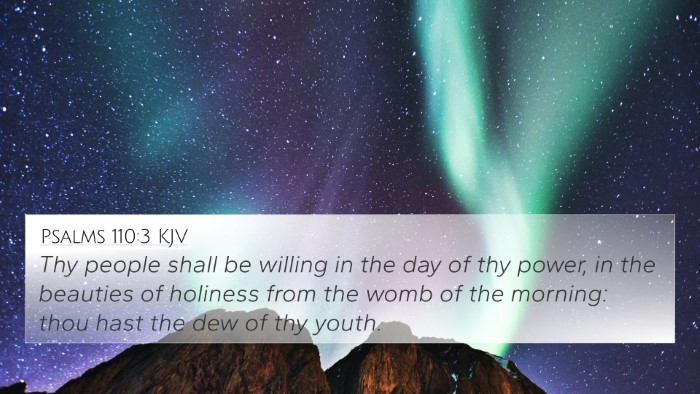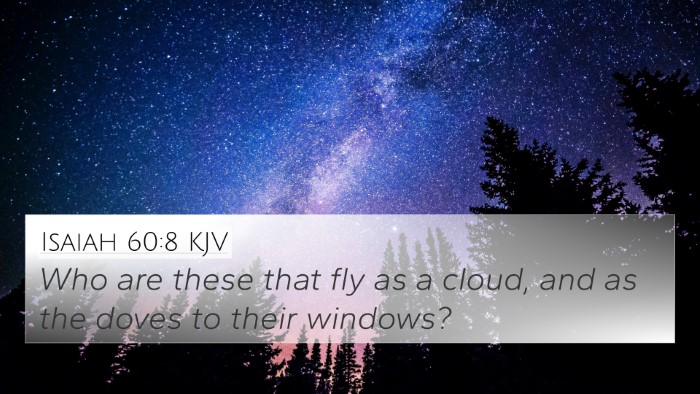Bible Verse: Acts 13:44
Verse: "And the next sabbath day came almost the whole city together to hear the word of God."
Meaning and Interpretation of Acts 13:44
This pivotal verse from the Book of Acts highlights the fervent desire of the early church to spread the message of Jesus Christ. The context surrounding this verse is significant, as it reflects the enthusiasm of both Jewish and Gentile audiences in Antioch of Pisidia. They were drawn together in great numbers to listen to the preaching of Paul and Barnabas, indicating the magnetic power of the gospel.
Contextual Background
The early church faced various challenges, but the mission to share the gospel was relentless. Acts 13:44 illustrates a time of great spiritual hunger. As the Apostle Paul and his companion delivered God's message, it sparked a movement, prompting nearly the entire city to gather for this spiritual feeding.
Insights from Commentaries
- Matthew Henry: Matthew Henry emphasizes that the unity of the people in their desire to hear the word of God is noteworthy. He believes this illustrates a time when God was active in the hearts of the Gentiles, and the draw of divine truth was evident.
- Albert Barnes: Barnes highlights the importance of the Sabbath in Jewish culture. He points out that this gathering demonstrates a breaking of barriers, as both Jews and Gentiles came together to seek God, showcasing the universal appeal of the gospel.
- Adam Clarke: Clarke discusses the excitement of the crowd. He notes the significance of hearing the word of God as a catalyst for faith, stating that this eagerness signified the beginning of a significant evangelistic movement.
Thematic Connections
Acts 13:44 is rich with themes of unity, evangelism, and the spread of God's word. The eagerness of the crowd signifies a historic shift toward the inclusion of Gentiles within the Christian faith, thus establishing early notions of a church without ethnic boundaries.
Bible Verse Cross-References
- Acts 2:41: The conversion of three thousand on the day of Pentecost illustrates the power of preaching and the need for communities to come together.
- Romans 10:17: "So then faith cometh by hearing, and hearing by the word of God." This verse supports the notion that hearing the gospel is foundational to faith.
- Luke 4:16-21: Jesus reads from Isaiah in the synagogue, showcasing the importance of preaching and proclaiming the good news.
- Acts 10:34-35: Peter’s realization that God shows no favoritism emphasizes the inclusivity highlighted in Acts 13:44.
- 1 Corinthians 1:10: Paul calls for unity among believers, much like the unity formed among the listeners in Acts 13:44.
- Matthew 28:19: The Great Commission underscores the directive to spread the gospel to all nations, a theme echoed in Acts 13:44.
- Hebrews 10:24-25: Encouragement to consider how to stir one another to love and good deeds resonates with the communal gathering in this verse.
- Isaiah 55:1: "Come, everyone who thirsts, come to the waters..." This prophetic invitation aligns with the spiritual thirst depicted in Acts 13:44.
- Acts 4:4: The growth of the church and the number of believers reflects the context and results of effective evangelism seen in Acts 13.
- 2 Timothy 4:2: Urges the preaching of the word in season and out of season, similar to the fervent gathering described in Acts 13:44.
Conclusions on Inter-Biblical Dialogue
Acts 13:44 not only marks a significant event in the early church but also serves as a barometer for understanding the expanded reach of the gospel. It encapsulates the early Christians’ zeal and the defining characteristic of community surrounding the word of God. The verse provides a clear illustration of how spiritual hunger bridges gaps between different cultures and backgrounds, fostering an environment ripe for the transformative power of Christ.
Utilizing Tools for Bible Cross-Referencing
For anyone looking to delve deeper into the themes and connections of Acts 13:44, various tools are available:
- Bible concordance: Helps identify terms and themes across scriptures.
- Bible cross-reference guide: A valuable tool for understanding scriptural relationships.
- Comprehensive Bible cross-reference materials: Include studies that link stories, themes, and teachings together.
- Cross-reference Bible study methods: Enhance personal or group studies by connecting the dots between verses.
- Bible chain references: Provide a sequence of related verses for deeper exploration.
How to Use Bible Cross-References
Understanding how to effectively use cross-references can enrich one’s study of the Bible. Here’s a basic guide:
- Identify Key Themes: Start with a central verse, like Acts 13:44, and identify its main themes.
- Look for Similarities: Use a concordance to find verses that discuss similar themes or contexts.
- Explore Differences: Comparative analysis can reveal unique perspectives across scriptures, enriching understanding.
- Document Connections: Keep track of insights and discoveries for future reference.
- Integrate into Devotionals: Application of cross-referenced verses can aid in personal reflection and growth.
